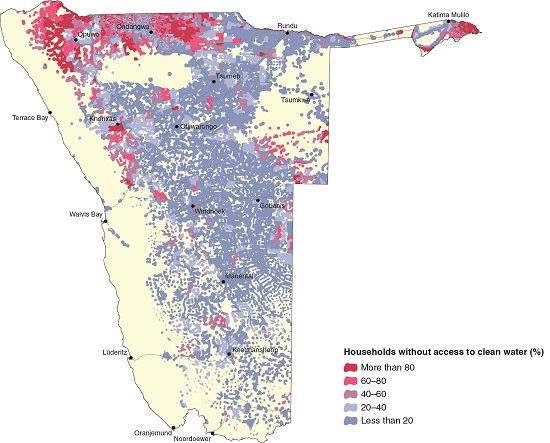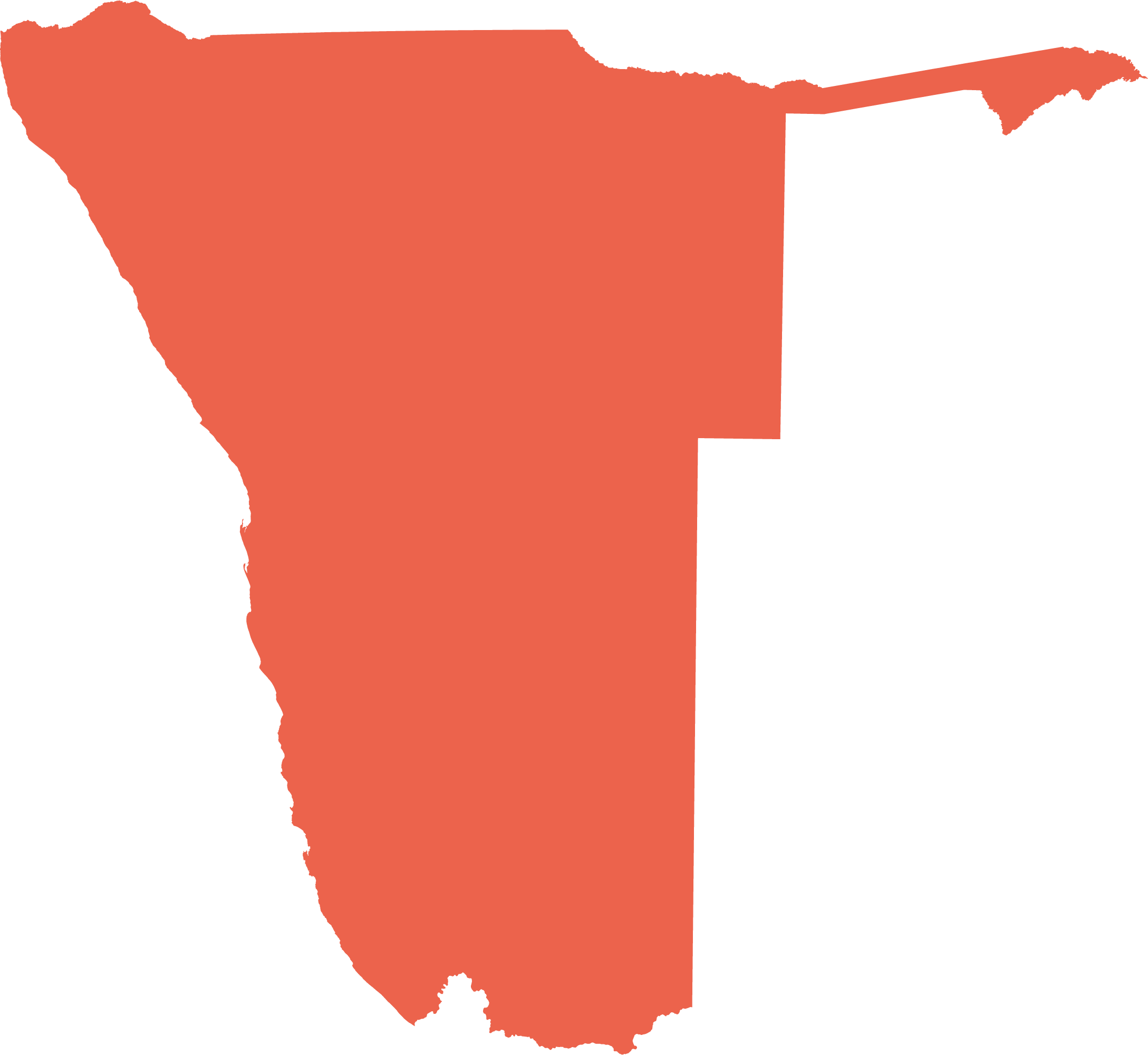Access to water
4.17 Access to clean water since 199119

The supply of clean (i.e. potable) drinking water has increased significantly in recent decades. In 2011, 80 per cent of households were estimated to have access to safe drinking water, up from 60 per cent at independence in 1991. By 2016, 94 per cent of Namibian households were estimated to have access to potable water.
In 2011, a much higher proportion of households in urban areas (98 per cent) had access to safe drinking water than those in rural areas (63 per cent). Access improved further by 2016, at which time 99 per cent of urban households and 85 per cent of those in rural areas had access to safe drinking water.
4.18 Access to clean water, 201120

While the graph in figure 4.17 gives absolute values, this map shows that households in some areas were not as well served as others. In certain areas of Namibia more than 80 per cent of households did not have access to safe drinking water in 2011. These were largely in rural areas in northern Namibia, especially in the northwest and far northeast of the country. There are also isolated areas in the central east and the south where 40 per cent of households or more did not have access to clean water. Population densities in these areas are relatively low and households are reliant solely on groundwater. This is also the case in the southern portions of Omusati and Oshana, and in eastern Ohangwena.

